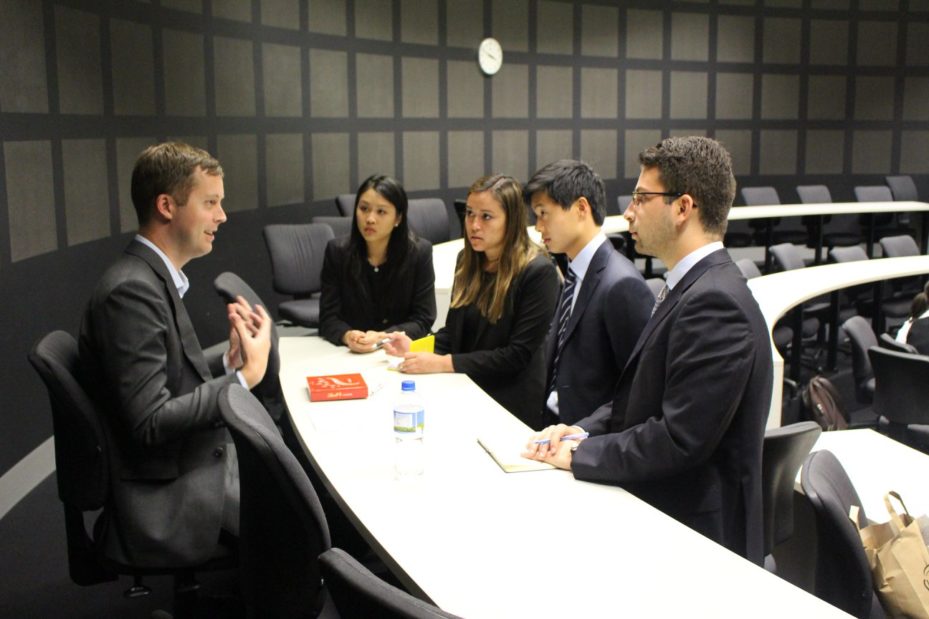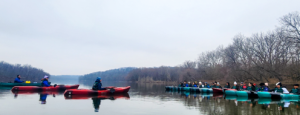Case competitions give business students the opportunity to apply the knowledge they’re learning in the classroom to real-world industry challenges. Last month, four Wharton seniors had the chance to do that at the highest level and won.
Ellen Naruse, W’18, Brandy Sun, W’18, Joseph Robillard, W’18, and Brandon Saw, W’18, earned the top spot at the 2018 Champions Trophy Case Competition. Founded in 2008 and hosted by the University of Auckland in New Zealand, Champions Trophy is a four-day case competition open only to winners of other global case competitions.
“It’s the best of the best, and it’s regarded by a lot of people as the world championship,” said Prof. Keith Niedermeier, the team’s mentor and Director of the Undergraduate Marketing Program.
After Wharton won the Sauder Summit Global Case Competition at the University of British Columbia in 2017, the School was invited to compete in Auckland — as one of just two teams from the U.S.
During the contest, undergraduate students from around the world spend several days formulating innovative business solutions for four different companies: a nonprofit, a small-and medium-sized enterprise, a public limited company, and a software company. These real-world case studies are designed to highlight some of the strategic challenges and managerial dilemmas that global business leaders face working in a fast-paced environment.
And the students have to face these challenges without the help of computers or other electronics — each team is only given access to two scientific calculators. “They couldn’t even make PowerPoint slides. So they had to do financials with a calculator, and they had to rely only on their knowledge base,” explained Niedermeier.
This technological restriction was an interesting challenge for the team. “It was definitely a learning curve,” Joseph said. “We had to be confident in things that we had no data to back up whatsoever. You couldn’t go up there, give a recommendation, and fall back on it in the ‘Q and A’ section. You really had to be gung ho confident and think things out carefully.”
Time restrictions placed on teams made the competition even harder. “Because we were in such a time crunch — we only had five hours for the whole thing — it was important that we stick to what we decided and move forward, but at the same time remain very flexible,” Brandy said.
How the Team Became Trophy Champions
Becoming the “champion of champions” wasn’t easy. Niedermeier, who selects and mentors all teams for international case competitions, said that 25 candidate teams auditioned to attend one of four international case competitions. The selected teams went through a rigorous training process.
“We actually run mock case competitions as practice — the team creates the solutions, and presents them to other students and me. We push them, we practice Q&A, and I give them a lot of harsh feedback,” he explained.

Dubbed by her teammates as the resident “finance whiz”, Brandy was a first-time case competitor. She credits some of her success to classes she took at Wharton. “Our last case was actually a sports case. I took a Sports Business Management class that just happened to be relevant,” she said. “Marketing 101 also provided us with a lot of basic fundamentals and frameworks from which to approach a problem.”
Other team members a much earlier start in the case competition world. Ellen’s triumph has been a long time coming. “Sophomore year, when Joseph and I met in our business fraternity, we tried a random case competition and it did not go well,” she admitted, but it piqued her interest. “I was weirdly intrigued by the process of doing a case competition.”
Joseph, Brandon, and Ellen joined Penn MUSE (Marketing Undergraduate Student Establishment), the 2016 Platinum chapter of the American Marketing Association at the University of Pennsylvania. “That’s where I learned the majority of what we use now,” he said.
Ellen agreed. “We have this storyline that works — we set up the objectives and key insights from the given case background and then strategize for the company’s position. We tend to use this structure a lot, just adjusting it for each case’s specific context,” she said. “So, outside the classroom, club practice helped us gain a lot of experience.”
A Winning Strategy
The team organized itself into two pairs for each case they analyzed and presented. Joseph and Ellen presented the situational analysis and strategy, then handed it off to Brandon and Brandy to address tactics, execution, and impact.
One of the team’s secrets to success was their “opportunistic” way of handling the Q and A section. “We chose the tactics that were most feasible and most impactful, but at the same time we acknowledged that there were other options — they just weren’t the best,” said Ellen.

Joseph added, “Professor Niedermeier calls it ‘inoculating the judges to other people’s solutions,’ because you also want to think about what other teams could potentially pitch as more low-hanging-fruit tactics.”
The team used their individual strengths and positive group dynamic to devise a time-efficient approach. They had a good understanding of how much time they needed to read the case, discuss it, and build their slide deck. “Joseph, Brandon, and I have worked on several case competitions together, so we really understood our strengths, and obviously, Brandy fit super well into that picture,” Ellen said. “In New Zealand, we didn’t waste any time — we knew our roles, we set an agenda, and that made us really efficient.”
In particular, they emphasized that their personal relationships were just as important as their professionalism. “It can be a very high-pressure environment, but we didn’t let our personal feelings get in the way of voicing concerns or disagreeing,” Ellen explained. “When we got out of the room, we’d laugh about the stress we’d been through, and we would be absolutely fine.”
The team’s skill and cohesion were evident to others at the competition as well. In addition to winning the Champions Trophy, Brandy, Brandon, Ellen, and Joseph were also named the ‘People’s Choice’ by other advisors, participants, and attendees.
“This is the first time I have seen both awards go to the same team at this competition, largely because the level of competition is so high,” Niedermeier said. “They were incredibly diligent in their preparation and consistently excellent across four days of competition.”
— Linda Zou
Posted: March 22, 2018



















